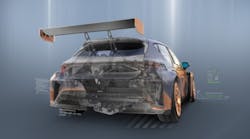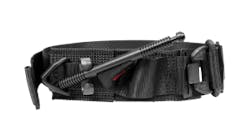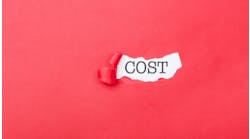3D CAD solutions are enabling manufacturers to accelerate product innovation and build better products faster. But not everybody is on board. Confusing persists. Let’s clear some of that up; here we chat with Paul Sagar, PTC’s vice president of product management, about the latest capabilities with 3D printing. Take a look…
Smart Industry: How does 3D printing accelerate product innovation?
Paul: As the ongoing pandemic has shown us, the global supply chain is shaky at best. Decentralized manufacturing, made possible thanks to 3D printing, has allowed us to be more flexible and innovate faster to cope with the rising demands of a global shake-up. Distributed manufacturing has made it possible to instantly share designs to locations around the world, so products can be made closer to the customer, putting the focus back on to product design and innovation, rather than supply chain. Face shields, masks and other PPE equipment, and even ventilator parts, have been produced thanks to 3D printing, not just from dedicated manufacturers, but from other verticals converting production lines to aid in the recovery efforts.
That said, it’s worth noting that no technology can guarantee innovation or accelerated progress toward innovation. What the astute use of the technologies such as 3D printing can do is to set up circumstances more favorable to innovation because of the freedom, flexibility and speed the technology affords designers. We explore those topics in more detail below.
3D printing gives back to time to product developers by:
- Accelerating the prototyping phase by making multiple working prototypes available
- Moving products from final design to production more easily. For example, once the optimal design is ready, 3D printing can also enable production with ergonomic and lightweight fixtures and jigs to streamline the production line.
- Moving 3D-printed products more easily through post-processing to get a final product. In many cases a 3D-printed part still will need some post-processing like machining; integrated CAD systems can prepare 3D-printable models and machining based on the same original model, shortening the time needed on the setup and when an engineering change may occur.
3D printing gives product developers flexibility to:
- Manufacture complex geometries (e.g. bioform shapes based on generative design)
- Switch between products without the costs of creating tooling, (e.g. new molds) or assembly-line setups
- Manufacture customized products, such as medical implants
- Do on-demand and on-site printing, such as sending a fully defined and validated 3D model to be manufactured halfway around the world in a 3D printer
3D printing enables product developers to test ideas and increase efficiency and reliability
3D printing paired with simulation enables product designers to do structural, thermal, modal and fluid simulation (among others)—even to simulate the printing process—without leaving the digital environment.
One example is simulation-generated lattices. This means the software optimizes lattices based on the simulation results and is free to optimize lattices not in accordance with the constraints of processes, such as casting, but within the much wider range of production options that 3D printing allows.
3D printing helps product developers by eliminating the need for expensive tooling for very short production runs
Imagine a customer who needs a part for a discontinued product. Neither the customer nor the manufacturer want to pay for the design and set-up of the required tooling or wait the required time. 3D printing can solve that problem easily. For the same reasons, 3D printing also makes sense when a manufacturer only needs, say, a few hundred parts.
3D printing helps product designers make the most of generative-design technologies
3D printing enables product designers to produce the bioform shapes resulting from generative design. Many of these shapes could not be manufactured any other way.
Smart Industry: How do digital workflows optimize efforts with 3D printing? What kind of workflows are we talking about?
Optimizing efforts
To optimize workflows using 3D printing, the design much be reusable during the workflows. This is what we call an ‘unbroken chain.’ The user can go from concept to ‘print’ in one CAD system. Digital workflows that adhere to the concept of an unbroken chain will optimize efforts with 3D printing.
Otherwise users risk these budget-sapping and schedule-disrupting issues:
- Discovering the CAD system can’t generate the desired lattice pattern for an optimal part
- Exporting the design for lattice creation and then having to reimport it back into the CAD system
- Exporting the design again, this time to a simulation package, to ensure the part meets strength and deflection requirements, then reimporting the design back into CAD
- Exporting the design into another software package to prepare it for 3D printing, with the required nesting and support structures, then reimporting the design back into CAD
- Fixing errors while hoping new ones haven’t been introduced
It doesn’t take a B.S. in engineering to realize that a 3D ]-printing solution, which relies on the import/export of triangulated geometries and the management of different file types in different systems, will quickly become a digital disaster before it ever has a chance to scale.
Extended workflows
These extended workflows rely on the unbroken chain:
- Being able to incorporate technologies such as generative design and simulation
- Being able to process scanned data (such as that for a part used in aerospace and defense), lightweight the part and then proceed to ‘print’
- Being able to use the same data for post-processing such as machining, inspection, etc.
Smart Industry: What is generative design in relation to additive manufacturing?
Paul: Generative design is a powerful technology based on AI that can run hundreds or thousands of possible solutions for the designer in a far shorter time than a human being could do it. Often only 3D-printing technologies can produce the bioform shapes resulting from the generative design studies.
In addition to its more ‘magical’ qualities, generative can handle a broad range of manufacturing constraints and methods such as machining, mold/casting, and others. Manufacturing companies are leveraging generative design to drive their traditional manufacturing processes and creating new hybrid processes that include additive manufacturing.
Generative design empowers designers to break the shackles of traditional design methodology and enables access to designs previously untapped. Designers can focus on the functional requirements and generate alternatives to suit every possible use case in a short amount of time. Thus, designers are iterating not just in the virtual world, but in the physical world thanks to 3D printing. This is an immediate value driver.
Smart Industry: What is a unique example of using 3D printing in extreme, edge environments?
Paul: Most of us know that the rover on Mars (Perseverance) is sending back information from the Red Planet, including sounds, images and other data. What we don’t necessarily know is that 3D printing played a huge part in that success. The rover has several 3D-printed components, including five parts as within a device that will analyze rock surfaces to search for fossilized microbial life. NASA managed to save 3-4 times the mass with 3D printing as compared to traditional manufacturing along with gaining higher precision as well. While all eleven of the 3D printed parts on the Perseverance Rover are secondary parts (meaning they won’t put the mission at risk if they fail), it is still testament to how far 3D printing has come that the parts perform reliably on another planet.
Even more exciting than printing parts on Earth and taking it into space as part of a mission is the actual ability to 3D print in space itself. Made In Space, a Florida-based company has done exactly that. It has sent 3D printers up to the International Space Station to manufacture parts in zero gravity, recycle waste into raw material to print with, and have ambitious plans to use moon dust as raw material in order to print resilient structures at a fraction of the energy costs of traditional processes.
Smart Industry: What most excites you about the near future of 3D printing?
Paul: Too many exciting choices!
- The accelerated adoption of 3D printing for real end-use production in both polymers and metal! Expect a boom, especially where 3D printing is being used to complement existing manufacturing technologies. We’re starting to see a lot of requests from customers who want to know more about it.
- Being able to print electronics along with structural components.
- Being able to print multi-materials on a single print job, so structural components can be printed along with electronic components, such as in antennas, RF components and more.


